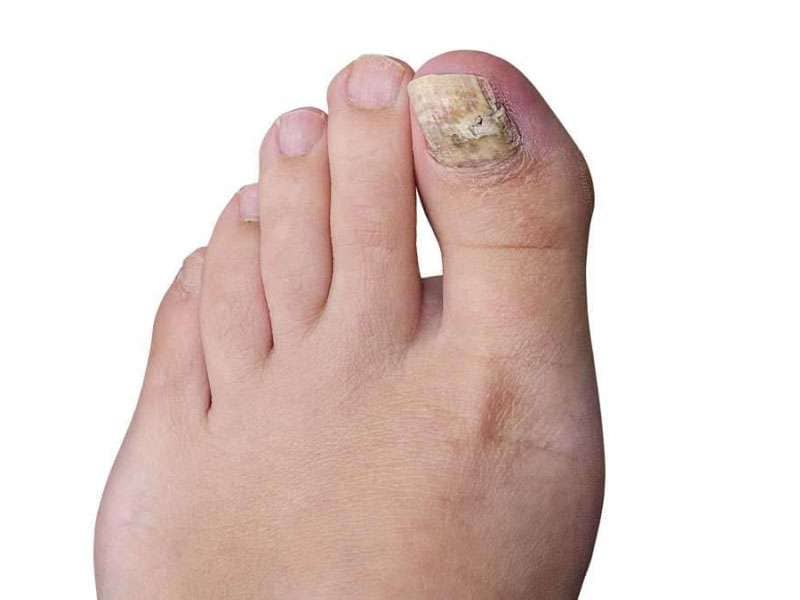Fungus Toenail Treatment
Believer it or not. Fungus toenail treatment is one of the often request foot treatments in Arizona. Due to the hot weather in the summer and daily activities, many professional athletes are suffering from nail fungus. Our foot doctors in Scottsdale are specialized in treating athlete’s foot and fungus toenail removal. Don’t wait. Fungus toenails are can cause more underline healthy problems or pass on to other people around you in your family.
What causes fungus toenails?
Fungal toenail infections can be caused by fungi, yeast, and mold. Fungal toenails can as well as be caused by athlete’s foot spreading to the nails, or it can spread from one toenail to another. Fungal Nails may interfere with standing, walking, and exercising. Nail fungus is easily identified by its appearance.
Risk factors for getting toenail fungus include:
- Very sweaty feet
- Frequent athlete’s foot infections
- Going barefoot in locker rooms, gyms, communal showers, public pools, etc
- Skin and nail injuries or conditions such as psoriasis can cause cracks in nails allowing the fungus to enter
- Health conditions or aging causing circulatory problems or a weakened immune system
If you routinely find your toenails yellowed and deformed, fungi may be to blame. There is a type of fungus that thrives in dark, moist, and warm areas, much like your shoes, shower, locker room, etc. You may notice yellow and/or white spots on the nail, along with a thickness that develops over time. If one nail is infected and left untreated, it can easily spread to other nails.

Fungus toenail symptoms
If one or more of your nails have the following condition, you may have nail fungus. The fungus can also infect your fingernails:
- A dark color, caused by debris building up under your nail
- Brittle, crumbly or ragged nail
- Nail distorted in shape
- Smelling slightly foul
- Thickened Nail
- Whitish to yellow-brown discoloration
In general, nail fungus is uncommon in fingernails. However, the fungus can also be transferred to your family member who steps on the contaminated shoes, floor, or ground.
What are the effective fungus toenail treatments?
Treatments include a laser cleaning of the nail(s), oral medications, medicated or non medicated anti-fungal cream, and surgery. Fungal nail infections require a process of treatments along with a continual effort to prevent it from recurring.
Here are the top 3 most popular and proven treatments or procedures to treat fungus toenails.
1. Toenail Fungus Medication
Our podiatrists will prescribe antifungal drugs that you take orally or apply to the nail. In some situations, medication is the first choice of fungus toenail treatment.
Oral antifungal drugs – Two drugs are commonly chosen because they clear the infection more quickly than do topical drugs.
Terbinafine (Lamisil)
Itraconazole (Sporanox)
These two drugs help clear the infected nail and slowly replacing the infected part. The patient usually take the drug for up to 12 weeks. But you won’t see the end result of treatment until the nail grows back completely. It may take several months or longer to clear the infection.
Fungus Toenail Treatment success rates with these drugs appear to be different among ages.
Medicated nail polish – Our foot doctor may prescribe an antifungal nail polish called ciclopirox (Penlac). You simply paint it on your infected nails after wash, clean and dry them and surrounding skin once a day. After at least 7 days, you wipe the piled-on layers clean with alcohol and begin fresh applications. You may need to apply this type of nail polish medicine daily for almost a year.
- Medicated nail cream – Our podiatrists in Scottsdale may prescribe an antifungal cream along with other medicines, which you rub into your infected nails after soaking and cleaning. These creams may work better if you first thin the nails. This helps the medication get through the hard nail surface to the underlying fungus.
Our foot doctor may thin the surface of the nail (debride) with a nonprescription lotion containing urea, a file, or other tools.
2. Home Remedies
Keeping the infection under control can include thoroughly washing and drying feet, applying off-counter anti-fungal cream, not sharing nail clippers or shoes/socks, wearing dry cotton socks, and changing them often, wearing dry shoes, and using shower sandals in wet, public places.
- Try over-the-counter antifungal nail creams and ointments. Schedule your appointment with our foot doctor, Dr. Kosak will recommend several proven products available on the market. Before applying the medicated cream or lotion, please wash your infected area, soak your nails in water, dry them.
- Trim and thin the nails. The key to curing your fungus toenail is to keep them clean. It will also help reducing pain by reducing pressure on the nails. Also, if you do this before applying an antifungal, the drug can reach deeper layers of the nail.
3. Surgery
The surgery to remove fungus-infected toenails are the last choice for treating fungus toenails.
- Temporary fungus toenail removal – Our doctor might suggest temporary removal of the nail so that he or she can apply the antifungal drug directly to the infection under the nail.
- Permanent fungus toenail removal – If some cases, our doctor will suggest a permanent nail removal if the infection is severe or extremely painful.

For more information on how to treat fungal nail infections or remove fungus toenail, please schedule an appointment today, don’t hesitate to contact us today at (480) 247-8443! It’s important to nip the fungus in the bud before it spreads!